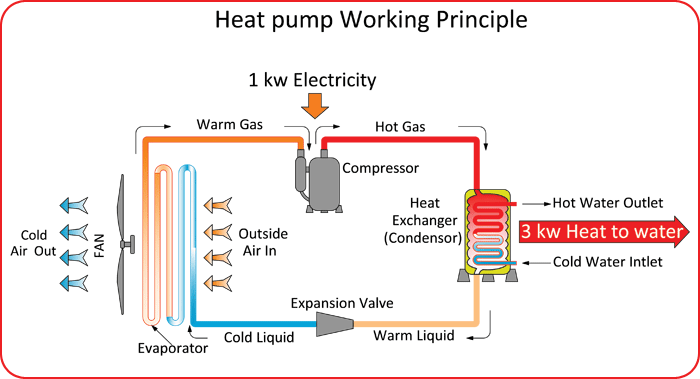Working - Principles of commercial & domestic
How does a Heat Pump Water Heater work?
Major components of a heat pump water heater include a compressor, a refrigerant, two heat exchangers ( a condenser and an evaporator) and an expansion valve.
- The operation begins with air being forced through an evaporator which contains a liquid refrigerant, with the help of a fan.
- This refrigerant evaporates to a gas and extracts heat from the ambient air.
- The warm gaseous refrigerant then passes through the compressor, which increases its pressure and it becomes a hot gas.
- This hot gas enters a heat exchanger (condenser) and transfers its heat to the water flowing from a storage tank.
- The refrigerant cools down in the condenser and becomes a warm liquid.
- It then passes through an expansion valve and becomes a cool liquid and enters the evaporator again.
- The cycle is then repeated in this manner.
- Thus heat absorbed from the air is transferred to the water and the heating continues till the desired temperature is reached.
Heat pump water heaters are highly energy efficient as most of the energy for heating comes from the external environment, and only a fraction comes from electricity. Thus for 1KW electricity consumed the heat transferred will be 3KW. The amount of electrical energy needed to heat water is greatly reduced compared to a conventional electric water heater in which, for 1KW electricity consumed the heat transferred is only 1KW . Thus in heat pump water heaters the coefficient of performance (ratio of output power to input power) can be as high as 4.

